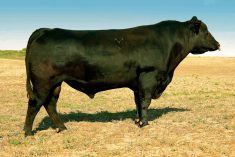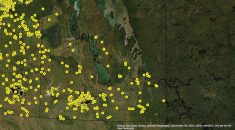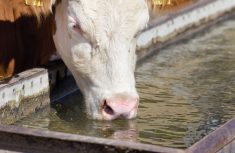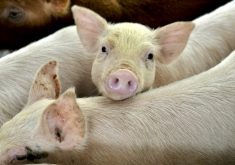Hog producers are on high alert after a third case of porcine epidemic diarrhea (PED) was confirmed within five kilometres of two initial infections May 8.
The root of the infections, centred in southeastern Manitoba, is still unknown.
“We wish we knew why this is happening because our producers are exercising very high standards of biosecurity,” Manitoba Pork Council general manager Andrew Dickson said. “People are very aware of this disease and the impact it could have on their operations and go to some lengths to try and keep the disease out.”
Read Also

Linebreeding horses drives genetic bottlenecks
Too much linebreeding and prioritizing pedigree can narrow genetic diversity and lead to horse health problems in future generations.
The first 2017 case of PED was reported at another sow operation May 2 in the region between Steinbach and Niverville.
Four days later, a nearby finishing barn also tested positive for the virus.
- Read more: Ramping up roadblocks for PED
Tracking sources of PED has been a perennial problem since the virus was first discovered in Manitoba in February 2014, Dickson has said. Suspected sources have run from manure off passing trailers to human error.
“We’ve never been able to say, in each individual case, ‘Yes, that is definitely how the disease got on the farm,’” he said. “By the time we see the disease, the cause has gone away.”
The provincial Emergency Operations Centre was activated after the first case was confirmed this year and an investigation into the infection is underway, provincial chief veterinary officer Dr. Megan Bergman has said.
“We’re in the process of conducting surveillance testing of any in contact farms that may have had some indirect contact with this particular site as well as following up on any potential linkages that may help us identify where the introduction may have occurred,” Bergman told industry website Farmscape May 5.
“At this point the barn certainly is working its way through the virus and, once the animals begin to recover, then they can undertake their cleaning and disinfection process,”
The most recent reports bring Manitoba’s total number of PED cases up to 13, all in southeastern Manitoba. The southeast end of the province had two cases of PED in September 2016 and three in late May and early June that same year. That’s up from 2014, when the virus was found in four facilities, and 2015, when only one case was confirmed.
The province has not released specific farm locations, although farms within five kilometres of either site have been advised. Over 22 farms lay in the warning area after the first two infection reports. Farms have also been asked to tighten biosecurity procedures.
Bio-containment is in effect for all infected locations, the province has said.
The Manitoba Pork Council isn’t surprised to see cases of the virus, given infection rates in the United States. Confirmed in the U.S. in 2013, the virus hit hard at swine inventories by the end of that year. Between June 5, 2014 and April 27, 2017, PED has been found at 3,162 locations in the United States and a further 227 sites had dual infections with porcine deltacoronavirus, another diarrhea-causing illness, according to the last situation report from the U.S. Department of Agriculture.
In Canada, the virus made its way to Ontario by January 2014 and Ontario announced its 101st case of the infection this March. Cases have also been reported in Quebec and Prince Edward Island.
While not a threat to humans or food safety, the virus causes severe dehydration in pigs and is often fatal in younger animals.
“It’s really important that producers maintain their biosecurity measures and even sit down with their staff groups, have another look at what they’re doing, make sure they’re following it, double check with everybody that they understand what needs to be done,” Dickson said.
Dickson further noted that sites such as assembly yards and slaughter plants have a higher risk of carrying the disease.
“It’s really important that producers make every effort to clean their trailers when coming back from such sites, and especially if they’re going to the United States,” he said.
Dickson noted losses have historically been more severe in sow operations, where the adults will generally recover, but the barn may lose between 80 and 100 per cent of infected piglets.
Losses have been small so far this year, Dickson has said, but added that the situation could change within a matter of days.
Nine of the confirmed 12 locations where PED has been found have since been declared PED presumptive negative, meaning that environmental and herd tests have discovered no remaining trace of the virus, although some risk of contamination remains in manure storage.
Manitoba Pork Council says it can take six months to a year to assist an affected farm in its recovery following an infection.
















